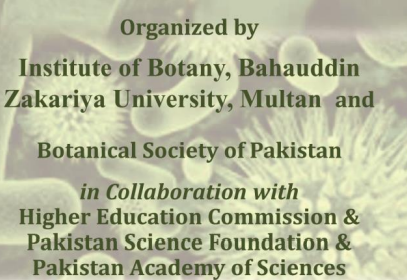
PJB-2024-1555
A study on inhabitant microorganisms isolated from wastewater irrigated soils of Karachi, Pakistan
Paras Shah, Muhammad Abid, Noureen Basheer, Uzma Sitara, Kousar Yasmeen, Abdul Hakeem Shaikh, Nusrat Jabeen, Muhammad Waseem Abbasi and Asma Hanif
Abstract
Increasing population and urbanization results in greater production of wastewaters through industrial, commercial, domestic or agricultural activities. Discharges of these resources contain several elements including nutrients and heavy metals. Therefore, utilization of wastewater for crop irrigation alters the soil property of agricultural land by accumulating nutrients and heavy metals. Present study revealed the occurrence of elements and the existence of microorganisms in wastewater irrigated soils of two different locations adjacent to the Malir river and Lyari river. MWIS (Malir wastewater irrigated soil) and LWIS (Lyari wastewater irrigated soil) contained a greater amount of organic matter (3.13 ± 0.10 %, 3.10 ± 0.10 %) as compared to NWIS (normal water irrigated soil). Physicochemical measures such as EC (1774 ± 5.49 µS/cm), salinity (0.89 ± 0.02 %) and TDS (887 ± 5.19 ppm) and heavy metals like iron (29.02 ± 1.72 ppm), copper (0.36 ± 0.02ppm), lead (0.82 ± 0.02 ppm) and nickel (0.94 ± 0.01 ppm) were recorded higher in LWIS as compared to MWIS and NWIS. However, EC (425 ± 1.45 µS/cm) and TDS (213 ± 1.73 ppm) were found lowest in MWIS than LWIS in contrast to NWIS. Nutrients like nitrogen, potassium and heavy metal such as cadmium were approximately equal in all tested soil samples. Numerous fungal species have been sequestered from wastewater irrigated soils in which thirteen genera and twenty-seven species of fungi were isolated. Out of all fungal species, Aspergillus flavus, Curvularia intermedia, Fusarium solani and Rhizopus sp. were found dominant (6.67×103 cfu/g soil) in MWIS, while LWIS comprised the highest cfu (1 ×104 cfu/g soil) of Trichoderma viride and A. parasiticus. In addition, bacterial species like Ralstonia pickettii was found superior in MWIS with 3.24×107cfu/g soil. Whereas, five different strains of Acinetobacter lwoffii / jansani were isolated from LWIS along with Pseudomonas aeruginosa (4×105 cfu/g soil) and Shigella dysenteriae (1×105 cfu/g soil). The current study revealed the existence of microorganisms in different qualities of soils having complex nature that were irrigated by wastewater. It was evaluated that sequestered fungal and bacterial species were able to tolerate the complex nature of wastewater irrigated soils that have an adequate environment for the survival of fungi and bacteria
To Cite this article: Shah, P., M. Abid, N. Basheer, U. Sitara, K. Yasmeen, A.H. Shaikh, N. Jabeen, M.W. Abbasi and A. Hanif. 2024. A study on inhabitant microorganisms isolated from wastewater irrigated soils of Karachi, Pakistan. Pak. J. Bot., 56(6): DOI: http://dx.doi.org/10.30848/PJB2024-6(5)
Download PDF


